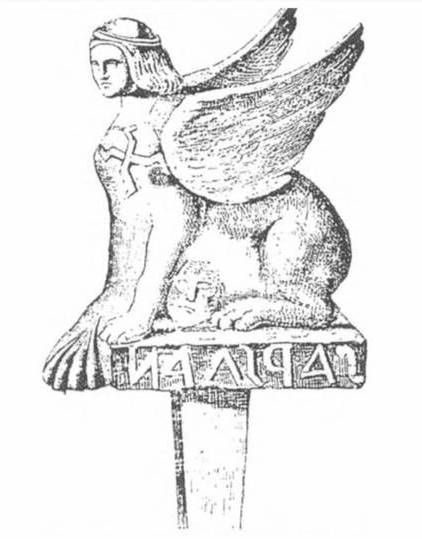🧐 Ancient Beat #91: Celestial maps, Mongolian Arcs, and deciphered inscriptions
Happy New Year, folks! It’s 2024 and this is issue #91 of Ancient Beat. Let’s kick off the new year with some news about years gone by.
Here’s the latest ancient news. 👇
🗞 Ancient News: Top 5
Ancient 'Ritual Artifact' May Reveal Secrets of Deep Space — This one was presented in a November paper but this is my first time hearing of it. An ancient stone disk found in Italy, possibly over 2,400 years old, may represent one of the oldest celestial maps. Engravings on the disk align with the constellations Scorpius, Orion, and Cassiopeia, as well as the star cluster known as Pleiades. One unidentifiable mark near Orion leads the researchers to suggest that it may represent a star that has since produced a supernova or perhaps a failed supernova, now a black hole. More research will need to be done.
Archaeologists Investigate the Mysterious Mongolian Arc — The Mongolian Arc is a 250-mile earthen wall system in Eastern Mongolia dating to the 11th-13th centuries. Its function is debated. It was initially thought to be a defensive wall against Mongol invasions, but a new study found that this is unlikely due to the distance between structures on the Arc. Instead, the study suggests that it regulated the movement of people and livestock, and facilitated tax collection. More excavations and research are underway.
1,500-Year-Old Gold Buckles Depicting Ruler 'Majestically Sitting on a Throne' Discovered in Kazakhstan — At the site of Eleke Sazy in Kazakhstan, archaeologists unearthed two 1.5-inch gold ornaments depicting the khagan of the Göktürks (a nomadic confederation) in a 1,500-year-old tomb. In fact, these are the earliest known depictions of the khagan. The plaques show a ruler on a throne surrounded by his aides, symbolizing the “sacred nature of power in ancient Turkic society,” according to Zainolla Samashev. They were found in the central chamber of a tomb where a prince was cremated — the tomb later became a cultic memorial complex, indicating that the man became deified by later generations.
Cerne Abbas Giant is Hercules and Was Army Meeting Point, Say Historians — A few years back, contrary to earlier beliefs of its prehistoric or early modern origins, a study dated the site to the late Saxon era, possibly the 10th century. Historians have been looking into the “why” of it and they’ve now concluded that the figure was likely a representation of Hercules that served as a muster station for West Saxon armies during Viking invasions, symbolizing masculinity and courage. Its location and characteristics align with “hanging promontory” meeting sites, ideal for assembling armies.
‘Mysterious’ Inscription on Ancient Sphinx is Deciphered, Revealing ‘Unusual’ Message — A third-century sphinx from Dacia (modern-day Romania) has an inscription that has been perplexing experts for over a century, but it has now been deciphered. It’s a proto-Hungarian poem using Greek letters from right to left. In English, it reads, “Lo, behold, worship: here is the holy lion.” According to Peter Revesz, “Once the mirroring is noticed, the characters become easily recognizable as Greek alphabet letters, a few of them being in a more archaic form.” This unique discovery sheds light on a minority sphinx cult within the Roman Empire, differing from mainstream Roman mythology. The inscription's poetic form is also atypical for the era, indicating a deliberate, artistic choice by the scribe.
That’s it for the free Top 5! If you’re a free subscriber, sign up for the paid plan for another 21 stories and 13 recommended pieces of content covering Paleolithic cave paintings, palaces, underground passageways, mosques, lots of burials, enigmatic artifacts, Sparta, Vikings, cheesecake, and, of course, a whole bunch of “best of 2023” roundups.
Until next time, thanks for joining me!
-James
Twitter: @jamesofthedrum
P.S. If you want access but it’s a little too steep for you right now, just email me — I want this to be accessible.
P.P.S. Paid members, read on!
🗞 Ancient News: Deep Dive
Keep reading with a 7-day free trial
Subscribe to Ancient Beat to keep reading this post and get 7 days of free access to the full post archives.




